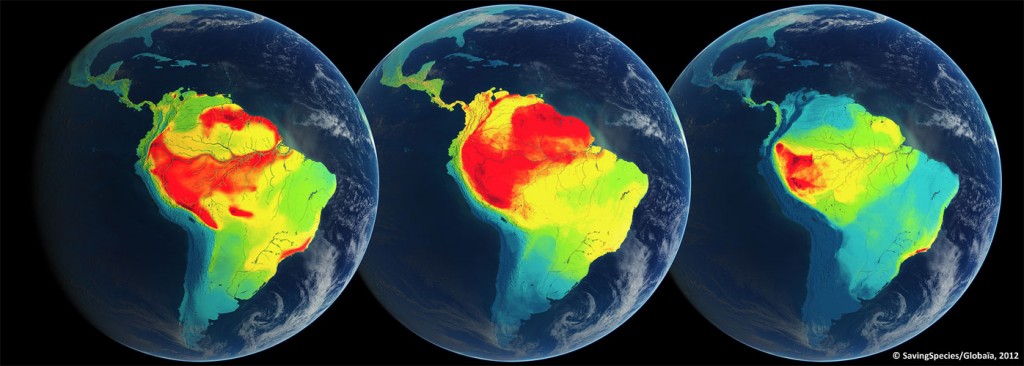These Beautiful Maps Show Where All Known Birds, Mammals And Amphibians Live
The maps include data on birds, mammals and amphibians, but not reptiles or fish since not enough is known about those organisms’ distribution

World map of color coded density of vertebrate species. Photo: Jenkins et al
Conservationists constantly warn that the planet’s biodiversity is in crisis mode, but the world is a big place. In order to best protect species, it’s useful to know where they live. With that simple truth in mind, a group of researchers have produced maps depicting the whereabouts of all known birds, mammals and amphibians at resolutions about 100 times finer than anything available before.
SavingSpecies reports on some of the interesting trends the maps reveal:
For birds, the Andes are simply unparalleled for their concentrations of rare birds. Within the Americas, only southeastern Brazil and parts of Central America come close to showing such concentrations of rare birds.
Rare mammals are concentrated in much the same pattern.
For amphibians, the concentration of these super-rare species is even more extreme. The map below shows how a handful of small regions in the Andes have exceptional concentrations of rare amphibians. In these and nearby regions scientists are discovering many new amphibians, just at the time when their habitats are disappearing faster than ever before.
Tellingly, too little data exist on reptiles and fishes in order to include them in the map. Animals such as insects and crustaceans are likewise out of the question for mapping since so little information is available about their distribution.
Still, the team hopes their maps can help inform both local and global policies, protections and research agendas based upon knowing where those efforts would make the biggest impact.
Here’s another view of the maps, showing how species concentrations can contrast by region.

South America showing color coded density of species of birds (left), mammals (middle), and amphibians (right). Photo: Jenkins et al
More from Smithsonian.com:
What Conservation Buys You
One in Eight Bird Species Are Facing Extinction
/https://tf-cmsv2-smithsonianmag-media.s3.amazonaws.com/accounts/headshot/Rachel-Nuwer-240.jpg)
/https://tf-cmsv2-smithsonianmag-media.s3.amazonaws.com/accounts/headshot/Rachel-Nuwer-240.jpg)